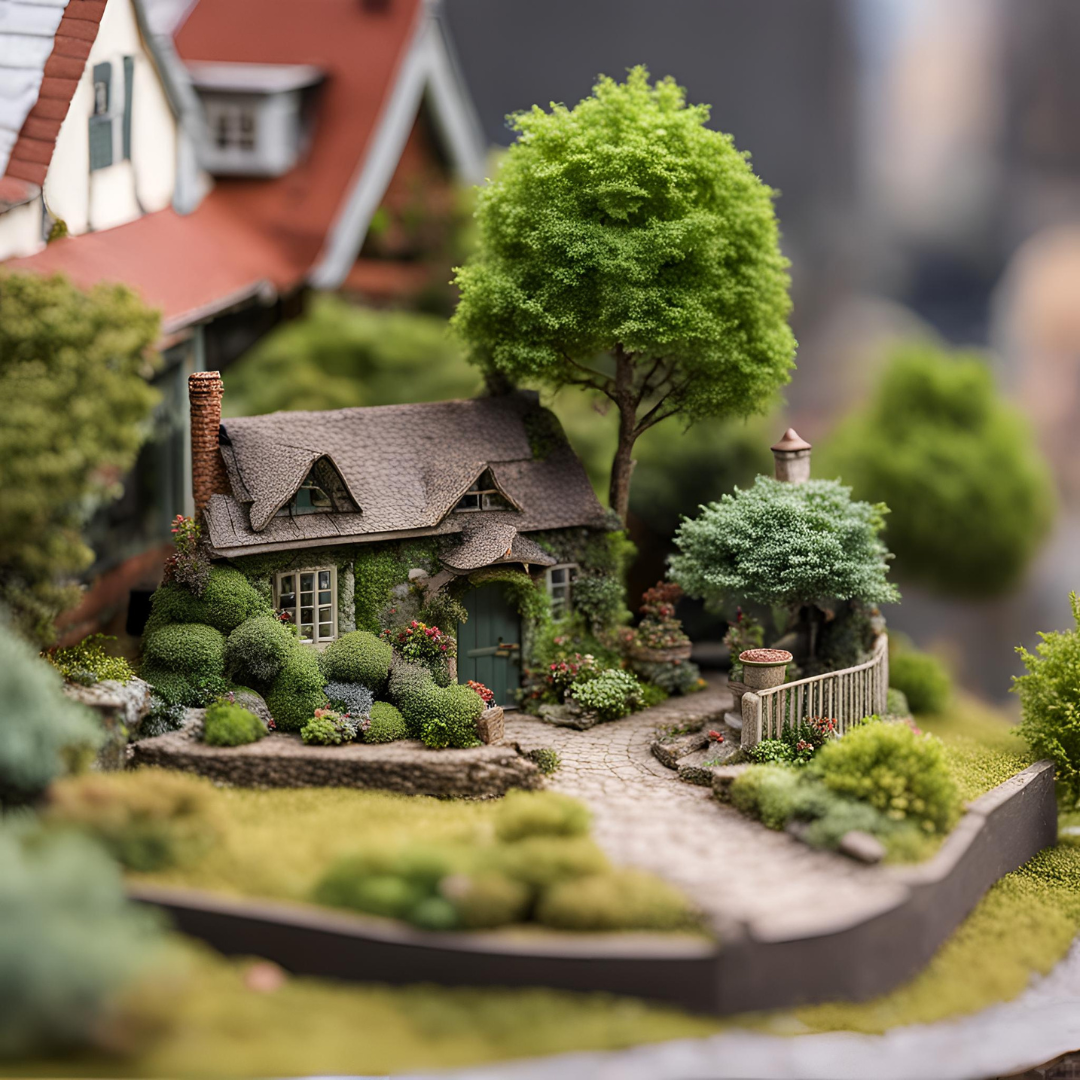Developing true-to-life and engaging miniature landscapes is an art style that needs innovation, accuracy, and great attention to detail. Over the years of practice, professional diorama builders have obtained the necessary skills that make it possible for them to bring a model scene into reality. This blog post will explore some tips and tricks from these pros on how you too can become a master at small-scale gardening.
Understanding Size and Proportion:
One of the most critical elements in creating mini landscapes is maintaining consistency with size and proportion throughout the entire work. Skilled diorama designers stress that all materials used should be in line with the scale of your project as a whole. When everything is proportional nothing seems out of place thus making trees blend well with rocks as well as houses match up against people figures etc., thus giving an impression that it is believable.
Choosing Materials Wisely:
Appropriate selection of materials is crucial if one wants his or her miniature scenery to look real. Experienced creators advise using natural substances wherever necessary; this means for example incorporating actual stones or twigs into your designs to add some authenticity to them. Furthermore, there are artificial products like static grasses, flockings, and realistic waters among others which can greatly improve how visually appealing your dioramas appear.
Creating Illusion of Depth & Distance:
Strategic placement of different things creates an illusion of depth within any given space even though such spaces may lack enough room required for such purposes. Professional designers usually employ forced perspective techniques wherein they make objects far away appear smaller than they are thereby enhancing three-dimensionality; As a result, placing bigger more detailed items closer while smaller less elaborate ones further off helps achieve both scales large distances.
Ground Cover Mastery:
The ground cover forms a major part of every small-sized land created. Too achieve naturalness mix various textures and colors; this entails combining fine with coarse materials such as sand, gravel flocks, etc., having different shades thereof to mimic various textures found in nature. Adding layers and then blending them well can make the terrain look more realistic visually.
Realistic Water Features:
Water bodies like rivers, ponds, or lakes can add life to any model scenery by introducing movement into these otherwise stagnant scenes. To achieve this effect experts often use epoxy resins or other similar products that create clear water surfaces when dry; It is also advisable to pay attention to detail for instance ripples, reflections transparency all of which contribute to making such features appear real.
Building Organic Structures:
For one’s landscape design to have a character there must be the presence of natural structures like rock cliffs, and hills among others. Professionals recommend making these out of foam plaster clay etc., using actual stones as reference points while ensuring shapes and textures are accurately reproduced thus giving them their true form.
Vegetation & Foliage:
Plants trees come second only after ground covers when it comes to making believable small-scale gardens. Different materials should be employed in creating various types suggested by seasoned designers e.g., bushes may be represented by finely ground foams while wire armatures covered with foliage materials can produce realistic-looking trees; Having mixed shades of green well-varied sizes and shapes leaves adds depth and authenticity into scenes.
Weathering & Aging Effects:
To make your models come alive weather them! This means applying different techniques aimed at imitating effects brought about by exposure structures surrounding the environment over time. Dry brushing wash pigments among others are commonly used by professional creators to simulate wear tear dirt moss etc., thereby giving viewers a feeling of history associated with a particulplaormomentent captured in the diorama.
Light and Dark:
Light is important to make a diorama look real. Professionals in this field use light which is coming from one direction that creates shadows and highlights making objects appear three-dimensional. A person can try different lights or angles until he/she gets the mood desired.
Every Detail Counts:
What makes an excellent diorama different from the others is the attention put to every single detail. Small rocks, fallen leaves, and miniature animals are added by expert designers with great care. These little things though tiny have a huge impact on how believable and absorbing the overall effect of the scene looks.
Learning From Nature:
The natural world itself provides some of the best ideas for miniature landscapes. Real-life environments are observed by those who have mastered dioramas at work while they take photographs and notes about various sceneries. This helps them understand how different parts fit together as well as giving useful references for their small-scale creations.
Be patient and precise:
To be good at designing small spaces one has to be accurate and patient too; these are among the vital virtues required for success in this field. What experts do is remind us that we should not rush but rather take our time when doing such things because if we hurry then mistakes may occur which would make it less interesting than expected otherwise had been hoped for so let us remember what was said before about being careful with every step undertaken during creation process since through waiting patiently while paying close attention towards details such acts could lead into producing astonishingly realistic looking miniature worlds.
Test everything; create anything:
Last but not least; never cease trying out new ideas as well as experimenting with different methods because even though they might not always work out still one could come up with something unique eventually… Artists who specialize in designing landscapes advise people not only to think within limits imposed upon traditional concepts concerning size reduction of outdoor scenes thus leading towarthe ds advancement of personal skills development style innovation, etc.
